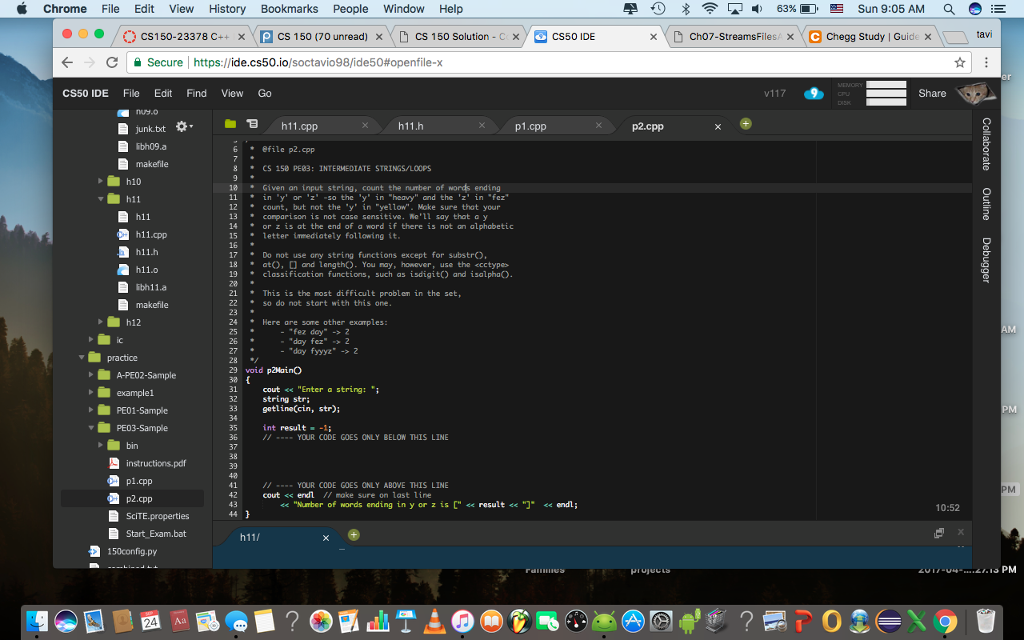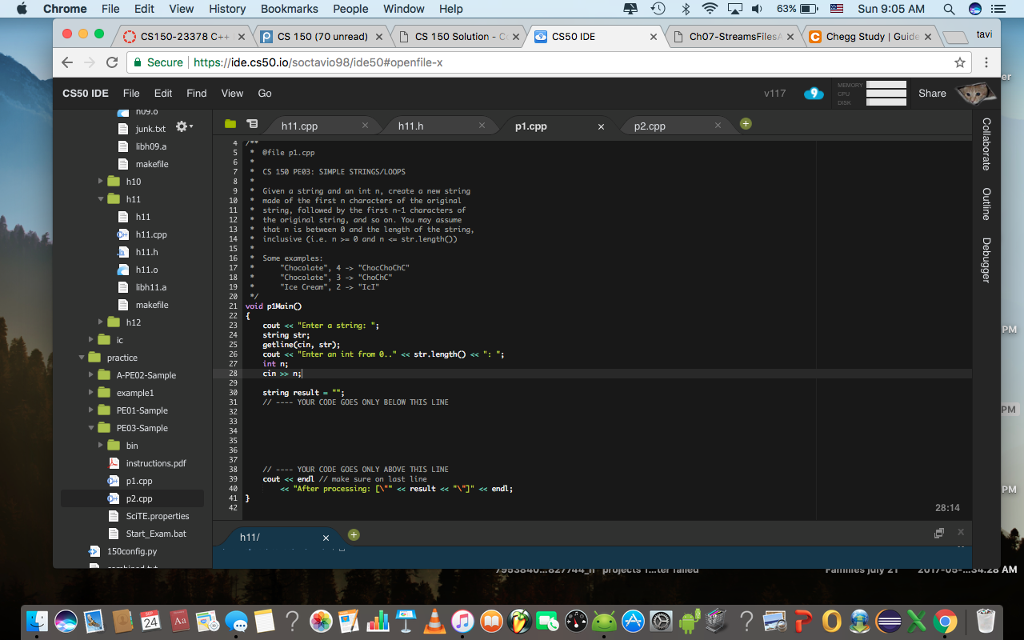Question
can someone help me create this for studying my upcoming test so i can pratice with it . here are the instructions. ----------------------- Each problem
can someone help me create this for studying my upcoming test so i can pratice with it . here are the instructions.
-----------------------
Each problem appears in its own file, p1.cpp and p2.cpp. Each file contains a single void function (p1Main and p2Main). These are "IPO" programs. However, the only thing that you will do is the processing portion of the program. The input and output are already completed. Do not do any printing or input other than that that already appears. Place your code where directed, and do not change any of the existing code outside of the marked section.
Both problems are taken from the sample code you received. P1 simple iteration can be solved with a single loop (usually a "for" loop). P2 intermediate iteration will require one or more loops in combination with several selection statements
--------------------------------------------------------------------------------------------------------------------------------------
p1
----------------------------
#include
// ---- YOUR CODE GOES ONLY ABOVE THIS LINE cout
--------------------------
p2.cpp
---------------------------
#include // ---- YOUR CODE GOES ONLY ABOVE THIS LINE cout ----------------------------------------------------------------------------------------------- 

Step by Step Solution
There are 3 Steps involved in it
Step: 1

Get Instant Access to Expert-Tailored Solutions
See step-by-step solutions with expert insights and AI powered tools for academic success
Step: 2

Step: 3

Ace Your Homework with AI
Get the answers you need in no time with our AI-driven, step-by-step assistance
Get Started


